- K/650/1144 Professional Development and Academic Writing Skills Assessment
- M26753 Mechanical Principles Assignment Brief | University Centre IOW
- Care Safeguiding Children Assignment | Oxford Brookes University
- PSY4011 Developmental Psychology Assessment Brief | Arden University
- QSP7PCM Professional Cost Management Assignment 2 September 2025 | UCEM
- EGR2006M Control Systems Assignment 1 Brief | University of Lincoln
- MBA7066 Innovation and Entreprenuership Assignment Portfolio 2025 | UGM
- Contract Law Assessment 2 Problem Scenario 2025-26 | University Of Salford
- Operations & Supply Chain Management Assignment Brief : E-Commerce Supply Chain Efficiency
- Unit 1 Programming Assignment 2025-26 | ESOFT Metro Campus
- K/651/4745 Unit 1 Teaching My Subject Written Assignment | Britannia Education Group
- H/650/1099 Level 4 Academic Writing and Research Skills Assignment Brief | LSBU
- ASB-4012 Codding for Business Application Assignment – Project in R | Bangor University
- Unit: Team Management in Health and Social Care OTHM Level 5 Diploma Assignment
- BTEC Level 3 Unit 4 Programming Assignment – Concepts of Programming
- HSO4004 Principles of Care Assignment-1 and Assignment-2 Semester-1 September 2025-26
- 1031ENG-N Civil Engineering Construction Technology In-Course Assessment (ICA) Group Report | Teesside University (TU)
- MOD009382 Finance and Governance in Health and Social Care 011 Assessment Coursework Report | Anglia Ruskin University
- Geotechnical Engineering Assignment 2025/26 – University Of Surrey (UniS)
- Essentials of Adult Nursing Summative Assessment – University of Roehampton London (UoRL)
HNC-D 10 Financial Accounting Assignment
| Subject | Financial Accounting |
Pearson BTEC Level 5 Higher National Diploma (HND) in Business
Unit 10 Assignment: Financial Accounting
Unit Title: Financial Accounting
Introduction: This unit introduces essential financial accounting principles and techniques that will enable you to record and prepare basic financial accounts. You will learn how to prepare accounts for sole traders, partnerships, and limited companies. This knowledge will help you contribute effectively to the accountancy function of an organization or prepare accounts for your own business.
Assignment Submission Format
- The assignment should be submitted in the form of an information booklet.
- It should include a demonstration of accounting covering the learning outcomes for the unit.
- The report should be in Arial or Times New Roman, font size 12, single-spaced.
- Use Harvard referencing system and include a bibliography.
- Submit the assignment in Word or PDF format with the Brighton School of Business and Management cover sheet.
- Deadline: Follow the timetable issued on your enrolment day.
Learning Outcomes (LO)
- LO1: Record business transactions using double entry bookkeeping and extract a trial balance.
- LO2: Prepare final accounts for sole traders, partnerships, and limited companies.
- LO3: Perform bank reconciliations to ensure company and bank records are correct.
- LO4: Reconcile control accounts and shift transactions from suspense accounts to the correct accounts.
Assignment Brief
Scenario: As an accountant, you have been tasked with preparing an information booklet for junior trainee accountants. You will also prepare accounts to demonstrate accounting techniques to the trainees.
Assignment Guidance – Information Booklet
The booklet should include:
- Explanation of double entry bookkeeping and trial balance.
- Difference between financial reports and financial statements.
- Explanation of accounts for sole traders, partnerships, and limited companies.
- Explanation of the reconciliation process, including the tools and techniques used.
- Explanation of control accounts and the reconciliation process.
- Purpose of suspense accounts and how they differ from control accounts.
Case Studies
Case Study 1:
ABC is a new business that started on 1 July. The business paid £3,000 into the business bank account. Answer the following:
- a. What is the dual effect of this transaction?
- b. What is the accounting equation after this transaction?
Case Study 2:
XYZ business started on 1 January by paying £40,000 into a business bank account. The business then made several transactions. Answer the following:
- a. What are the two effects of each of these transactions?
- b. What would the accounting equation look like after each of these transactions?
Case Study 3:
XYZ business spent £2,000 on purchases of goods for cash. The bank balance goes down by £2,000, but the business has other assets like inventory. Answer the following:
- d. What is the accounting equation after these transactions?
- e. The business took £600 of cash for personal use, how does this affect capital?
Case Study 4:
XYZ business made the following transactions in January. Answer the tasks below:
- Task 1: Identify how the debit and credit entries for each transaction are determined.
- Task 2: Detail the transactions into the relevant ledger accounts.
- Task 3: Create a trial balance based on the transactions provided.
Final Accounts and Bank Reconciliation
For Case Study 4, use the provided figures to prepare XYZ business’s trial balance as at 31 December.
Trial Balance Example
| Account | Debit (£) | Credit (£) |
|---|---|---|
| Sales | – | 47,140 |
| Purchases | 26,500 | – |
| Receivables | 7,640 | – |
| Payables | – | 4,320 |
| Expenses | 9,430 | – |
Assignment Guidance – Accounting
The demonstration of accounting should include the following tasks:
- Record business transactions using double entry bookkeeping and extract a trial balance.
- Prepare final accounts for a sole trader, partnership, and limited company.
- Present the bank reconciliation accounts in the correct format.
- Reconcile a control account.
Do You Need Assignment of This Question




